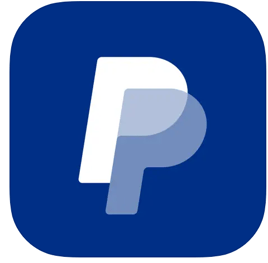Essential PayPal Security Tips to Prevent Hacking
Essential PayPal Security Tips to Prevent Hacking
3/11/20252 min read


How Someone Can Reset Your PayPal Password and Log In – And How to Protect Yourself
If a hacker knows your email address, Social Security Number (SSN), or security question answers, they can reset your PayPal password and take over your account. Here’s how they do it and how you can stay safe.
1. Password Reset Attack (If They Know Your Email Address)
How it works:
Hackers go to the PayPal login page and click “Forgot password”.
They enter your email and request a password reset link.
If they have access to your email, they reset the password and log in.
How to protect yourself:
✅ Use Two-Factor Authentication (2FA) so they need a second code to log in.
✅ Use an email provider with strong security (e.g., Gmail with 2FA).
✅ Never share your email publicly (on forums, social media, etc.).
2. SSN Attack (If They Have Your Social Security Number)
How it works:
Some PayPal accounts allow identity verification using an SSN.
If a hacker knows your SSN, they can verify the account and reset your password.
They might steal SSNs from data breaches, public records, or scams.
How to protect yourself:
✅ Never share your SSN online unless absolutely necessary.
✅ Monitor your SSN with identity protection services (e.g., LifeLock).
✅ Freeze your credit with Equifax, Experian, and TransUnion to prevent identity theft.
3. Security Question Hack (If They Know Your Answers)
How it works:
If you set weak or guessable security questions (e.g., “What’s your pet’s name?”), hackers can reset your password.
They find answers through social media, old accounts, or data leaks.
How to protect yourself:
✅ Use fake answers for security questions (e.g., “What’s your first car?” → Answer: Pineapple123).
✅ Never use real personal info in security questions.
✅ Change your security questions regularly.
4. SIM Swap Attack (If They Have Your Phone Number)
How it works:
Hackers contact your mobile provider and convince them to transfer your phone number to a new SIM card.
Once they control your number, they receive PayPal’s password reset codes.
How to protect yourself:
✅ Set a PIN or password with your mobile provider.
✅ Use an Authenticator App (Google Authenticator, Authy) instead of SMS codes.
✅ Avoid sharing your phone number online or linking it to public profiles.
5. Phishing Attacks (Tricking You Into Resetting Your Password)
How it works:
You receive an email or text pretending to be from PayPal, asking you to reset your password.
The fake link takes you to a lookalike PayPal page where you enter your details.
Hackers steal your password and log into your real account.
How to protect yourself:
✅ Never click on links in suspicious emails or texts.
✅ Always type paypal.com directly into your browser.
✅ Check the sender’s email address – official PayPal emails end in @paypal.com.
How to Fully Secure Your PayPal Account
✅ 1. Enable Two-Factor Authentication (2FA)
Go to Settings → Security → Enable Two-Step Verification
Choose Authenticator App (Google Authenticator is best)
✅ 2. Use a Strong & Unique Password
Example: X@7!mLw92#yF
Don’t use your name, birthday, or common words
✅ 3. Protect Your Email & Phone Number
Use a separate email for PayPal that nobody knows
Set up a PIN or security lock with your mobile carrier
✅ 4. Monitor Your Account Regularly
Check your PayPal activity for unauthorized transactions
Enable email alerts for every login and payment
By following these steps, you can prevent hackers from resetting your password and stealing your PayPal account.
Want me to create a step-by-step video guide on setting up PayPal security? 🚀😊
Support
Helping the community with PayPal user questions.
Connect
Learn
support@paypalnews.com
© 2025. All rights reserved.
